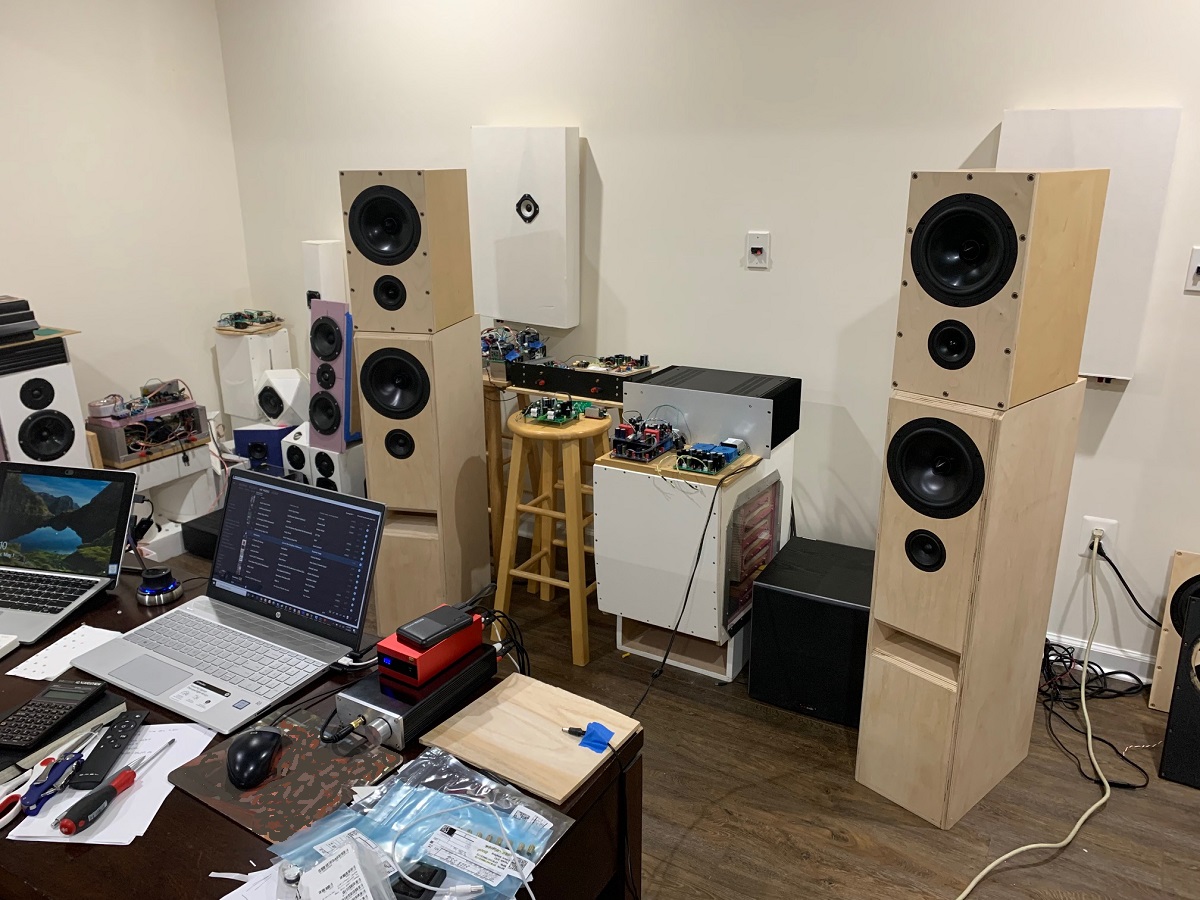So i’ve been pondering fundamentals of mixing and how the process interacts with the working space acoustics and directivity. Modern fullrange drivers leave one thing on the table,......the inevitable poor off axis response......
.....which i have been considering a blessing for nearfield use in a ‘not so ideal’ listening space......reduced smearing and early first reflections. All that would be left to augment focused wide range in axis response would be the low end.....a larger driver that works well in a sealed enclosure with a fast impulse response and response to 35hz......I need to hear HP filter applications on drums and bass guitar.
Thoughts?..........
.....which i have been considering a blessing for nearfield use in a ‘not so ideal’ listening space......reduced smearing and early first reflections. All that would be left to augment focused wide range in axis response would be the low end.....a larger driver that works well in a sealed enclosure with a fast impulse response and response to 35hz......I need to hear HP filter applications on drums and bass guitar.
Thoughts?..........
The Scanspeak 10F/8424 in a FAST w bass from RS225 in transient perfect XO and TL cabinet gives you response below 35Hz and flat frequency response. Design has been worked out and verified to be one of the best sounding speakers I have heard at any price.
10F/8424 & RS225-8 FAST / WAW Ref Monitor
The sealed non-TL version sits on top of the TL version. Sealed goes down to 50Hz.

10F/8424 & RS225-8 FAST / WAW Ref Monitor
The sealed non-TL version sits on top of the TL version. Sealed goes down to 50Hz.
So i’ve been pondering fundamentals of mixing and how the process interacts with the working space acoustics and directivity. Modern fullrange drivers leave one thing on the table,......the inevitable poor off axis response...
...which i have been considering a blessing for nearfield use in a ‘not so ideal’ listening space... reduced smearing and early first reflections. All that would be left to augment focused wide range in axis response would be the low end.....a larger driver that works well in a sealed enclosure with a fast impulse response and response to 35hz... I need to hear HP filter applications on drums and bass guitar.
Thoughts?
Assuming the driver holds up smoothly to about 30 degrees off-axis, a flat or even a slightly declining response trend (after Harman et al) is often preferred in the nearfield or in well-treated acoustic spaces where first-arrival dominates. If not in the nearfield and the space isn't quite so well treated, then the power response becomes more significant due to the increased influence of 1st reflection on spacial / tonal cues and you may need a slightly different axial response balance to compensate for reduced HF off-axis output. Basically, depends on the driver
My listening room is 11'x14' and I listen across the short dimension. Dstance to speaker cone from ear is about 7 feet which I would consider nearfield. My equipment is in my signature. I recently started playing with the Lii F-15 in OB and more recently added a pair of W-15 woofers in a bi-amp configuration. The F-15 runs full-range off my 45 SET amp and the woofer is crossed over at 80Hz and runs off a 90Wpc Class-AB solid-state amp . The frequency response is MUCH better with the woofer added and the bass feels more realistic specifically in the midbass area that really thumps the chest. I do have the speakers at a 90-degree behind the baffle using the wall to my advantage. Next experiment is to place them facing forward in the bottom of the baffle for a dipole setup.
Either way, I think the F-15 sounds very natural! If you think about it, a guitar, bass, etc. pro amp is a 15" open baffle cabinet so instrument reproduction is very realistic.
Either way, I think the F-15 sounds very natural! If you think about it, a guitar, bass, etc. pro amp is a 15" open baffle cabinet so instrument reproduction is very realistic.
Member
Joined 2009
Paid Member
I have the Audio Nirvana 15" full range, which at least looks similar to the Fii F-15 and it requires no woofer support when used in a Boffle - pretty similar to an OB but the open back box (similar to your guitar stack) provides extended bass response and even with jut one mono speaker it's enough for my neighbours.
So i’ve been pondering fundamentals of mixing and how the process interacts with the working space acoustics and directivity. Modern fullrange drivers leave one thing on the table,......the inevitable poor off axis response......
.....which i have been considering a blessing for nearfield use in a ‘not so ideal’ listening space......reduced smearing and early first reflections. All that would be left to augment focused wide range in axis response would be the low end.....a larger driver that works well in a sealed enclosure with a fast impulse response and response to 35hz......I need to hear HP filter applications on drums and bass guitar.
Thoughts?..........
According to Toole and other experts: good speakers sound good everywhere (good speakers having uniform on and off axis response), bad speakers will never sound great no mater what.
And they are absolutely right -however, I don't think they intended blanket application: try putting any speaker, however 'good' it may be in an echo chamber, and you will wish to leave. And a uniform polar response is not the sole arbiter of quality, although certainly it's a good sign. It has been known for speakers without that to be well liked, though the context is almost certain to be more limited.
- Status
- This old topic is closed. If you want to reopen this topic, contact a moderator using the "Report Post" button.
- Home
- Loudspeakers
- Full Range
- WAW for nearfield studio monitor?